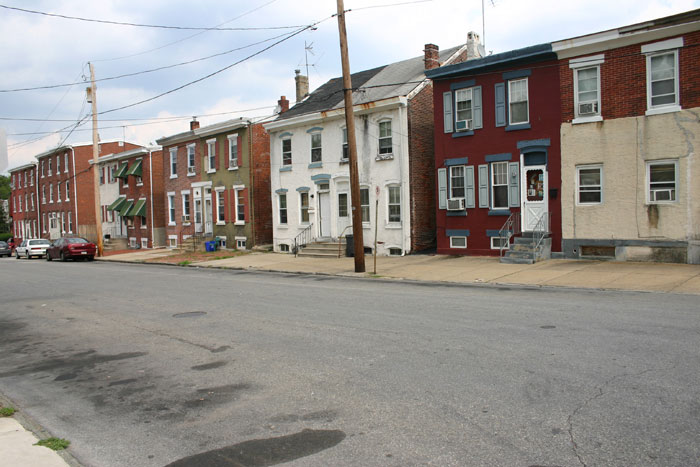Green Infrastructure sustains healthy communities
Modern civilization creates plenty of hard infrastructure covering the landscape -- roads and bridges, parking lots, water and sewer pipes, and power lines strung along thousands of poles. But healthy communities like Wyomissing, Pennsylvania, below, use trees and greenery to offset the negative environmental aspects of all this "hardscape."
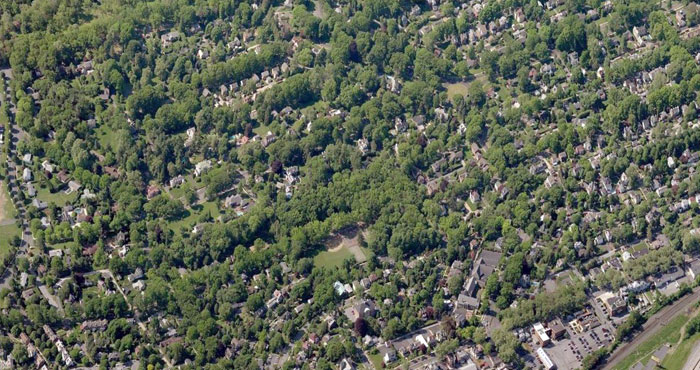
An abundance of impervious surfaces
Oklahoma City, below, is an example of a auto-oriented city that evolved into nothing but buildings, streets and parking lots. Suburban shopping centers and office parks are often the same -- just rooftops, roads, and parking lots.
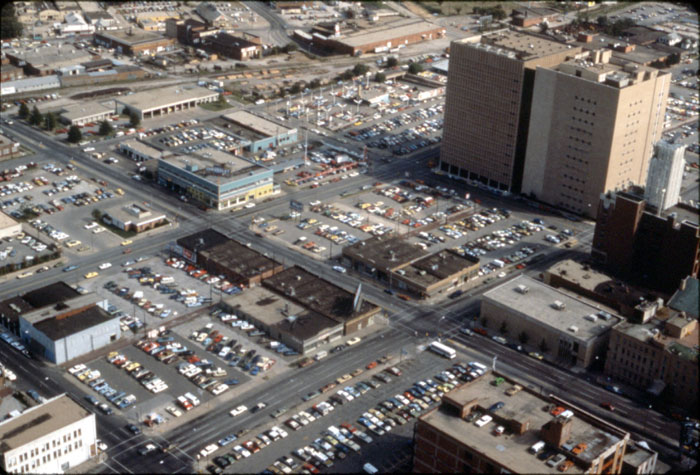
Traditional towns can be just as bad. Just buildings, streets and sidewalks, like this street in Norristown, Pennsylvania, below. Not a bit of vegetation to be seen .
Rooftops and asphalt generate massive runoff
Areas covered with impervious surfaces prevent rain water from soaking into the ground. Instead, rain water is channeled into grates connected to storm sewer lines, and then gushes directly into streams and rivers, increasing the number of floods and increasing their severity.
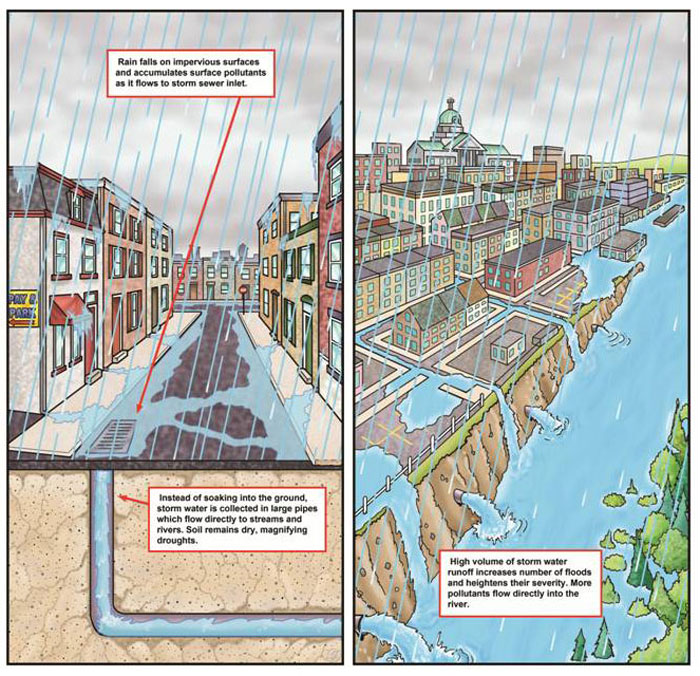
But trees and vegetation absorb rainwater
Trees -- especially large canopy trees -- can absorb an enormous amount of rainwater and hold it on their leaves, allowing it to trickle slowly into the ground over time. The canopy of big trees can cover streets, parking lots, and rooftops, even in densely developed areas like traditional towns. One large canopy tree can absorb 1,000 gallons of rainwater over the course of an average year. And trees planted along streams and rivers can prevent rainwater, soil, and pollutants from being washed into waterways.
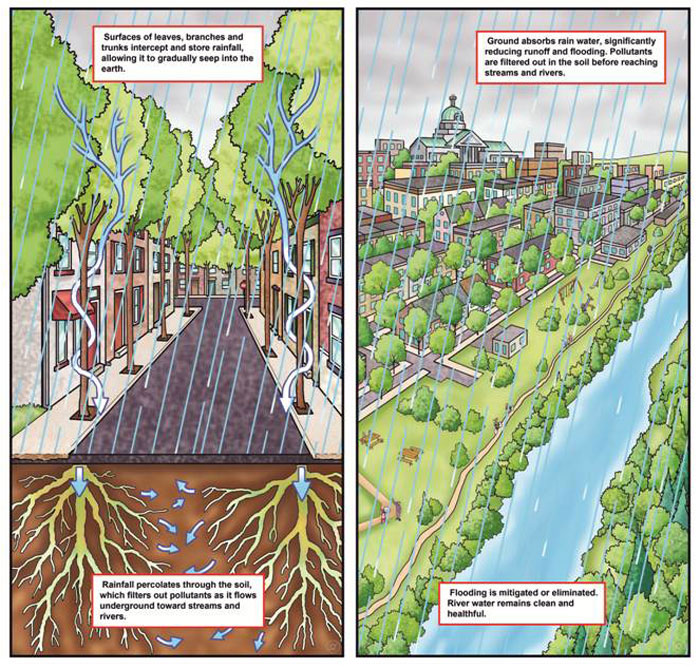
Green Infrastructure: removing excess impervious surface, planting trees
Here are two specific examples of how canopy trees can absorb stormwater in cities and towns.

